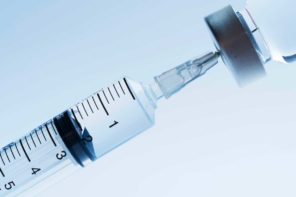Objective: To describe the timing of changes in fundamental frequency of the female voice following androgen therapy during female to male gender reassignment.
Methods: A 33-year-old female semi-professional singer undergoing gender reassignment and intramuscular androgen injections was examined at monthly intervals to monitor the impact of therapy on the voice. Laryngostroboscopy and acoustic analysis were performed simultaneously to monitor for potential laryngeal pathology.
Results: Pretreatment mean fundamental frequency (MF0) was 228.45 Hz and ranged from 140.26 Hz to 430.64 Hz. Between month 3 and month 4 of treatment, MF0 declined to 116.52 Hz and ranged from 90.75 Hz to 201.07 Hz. Shimmer increased from 3.4% to 7.8%. Noise to harmonics ratio (NHR) also increased from 0.12 to 0.17. The patient has continued to sing semi-professionally despite these changes in laryngeal function.
Conclusion: Androgen therapy exerted a profound change on mean fundamental frequency between the third and fourth months of treatment. In addition, pitch range was reduced in a commensurate fashion. Patients undergoing androgen therapy may undergo a signi?cant change in speaking voice between the third and fourth months of therapy. Moreover, though these changes may exert a profound impact on the singing voice, patients undergoing gender reassignment may still be able to achieve personal and professional success in their singing careers.
Abstract reprinted from: Damrose EJ, Quantifying the impact of androgen therapy on the female larynx, Auris Nasus Larynx (2008), doi:10.1016/j.anl.2008.03.002
Read the full journal article here.
Also see: Testosterone and the Trans Male Singing Voice
Special thanks to TransGuys.com reader picji for sharing this! (via Drik via Joshua Klipp)
Any views expressed in this article are the views of the authors and are not necessarily the views of TransGuys.com’s publisher or contributors. See full Disclaimer.




I have some doubts about the measurements carried out in the experiment. It is emphasized in the article that the subject is a singer, yet the pitch range measures (if correct) indicate not only a range that hampers singing but makes everyday speech monotonous.
Before the androgen therapy the range was 140-430 Hz, which equals 19 semitones. Considering that there are 12 semitones in an octave, the measures indicate that this singer had less than 2 octaves at his disposal. The normative data for female and male teachers (professional voice users but not singing professionals) is hovering around 24 semitones (2 octaves). There are two possibilities to explain the results in the article: either the measures were not mapping the entire pitch range, or the subject had already had a narrowed pitch range before the commencement of the androgen therapy (which would have warranted a note in the article and a thorough laryngeal examination to begin with).
By the 3rd or 4th month, the author suggests that the singing pitch range narrowed down to 90-201 Hz, which is 13 semitones (an octave and a semitone). If this measure was correct, the singer could have not sung anything more involved than “Row row row your boat” (which covers exactly one octave). A pitch range of 13 semitones is actually pathologically small and as such should have been indicated in the article.
But the fact that the author emphasized that the singing career was not harmed indicates that the measures we see in the article are not truly indicative of what happened to the singer’s larynx during transitioning.
I wonder if cultural difference will play a considerable role in this experiment. I have to say, men with Asian background tend to have higher voice than men with Western background. I wonder if they took that into account during the experiment?